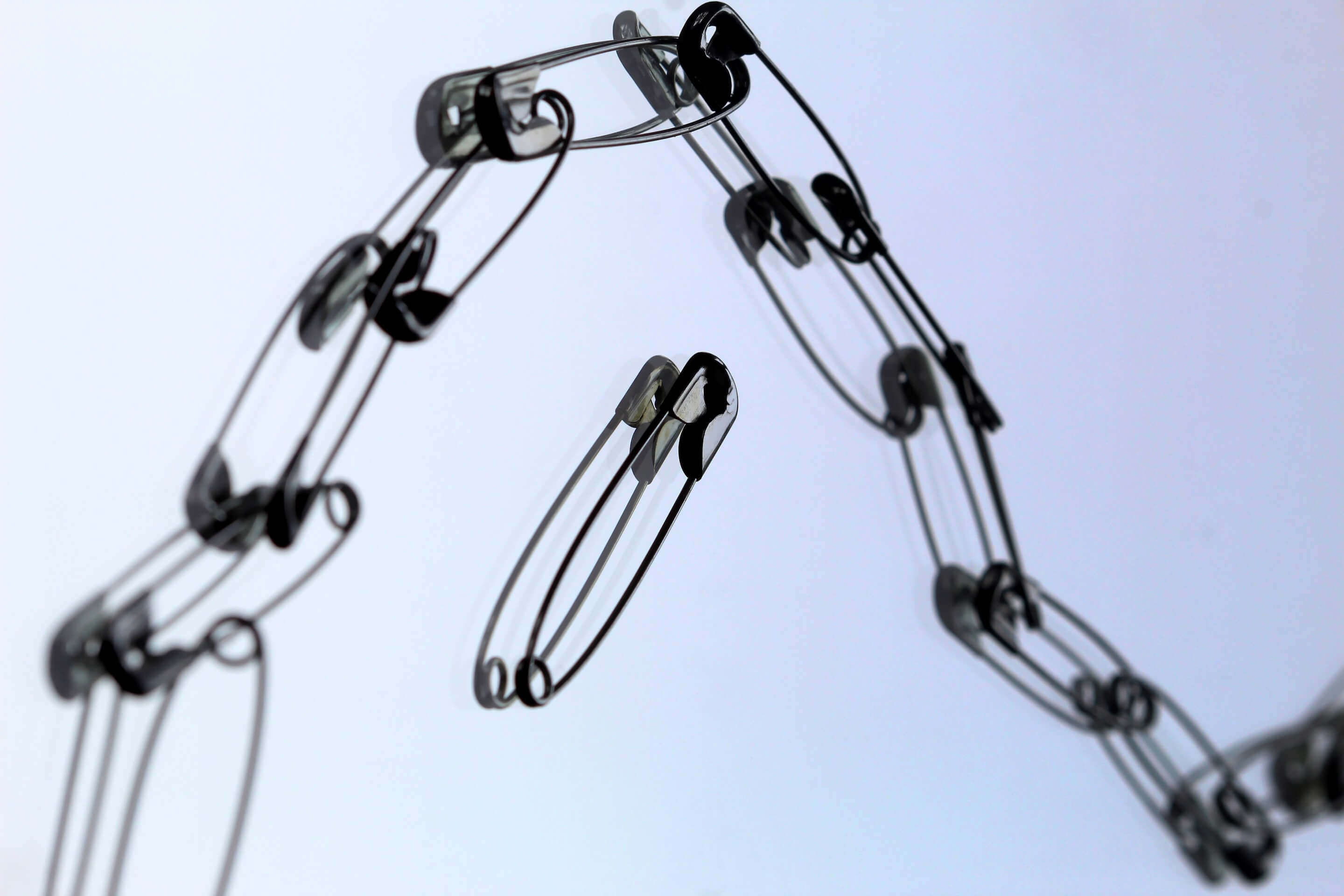链式队列和顺序栈
Jun 24, 2021
»
code
Photo by Anne Nygård on Unsplash
链式队列
队列,一种抽象数据类型,是先进先出(FIFO, First-In-First-Out)的线性表。通常用链表或者数组来实现。队列只允许在后端(称为 rear)进行插入操作,在前端(称为 front)进行删除操作。
下面是有头结点的链式队列,使用链表作为基本数据结构,所以不存在伪溢出的问题,队列长度也没有限制。但插入和读取的时间代价较高。
结构体定义
//队列链式存储结构
typedef struct link_node {
int value;
struct link_node *next;
} link_node; //队列结点
typedef struct {
link_node *front, *rear; //队列头尾指针
} link_queue;
初始化
void init_queue(link_queue *Q) {
Q->front = Q->rear = (link_node *) malloc(sizeof(link_node)); //头结点
Q->front->next = NULL;
}
判断队列是否为空
void is_empty(link_queue Q) {
if (Q.front == Q.rear)
printf("队列为空!\n");
else
printf("队列不为空!\n");
}
入队
void en_queue(link_queue *Q, int value) {
link_node *ptr = (link_node *) malloc(sizeof(link_node));
ptr->value = value;
ptr->next = NULL;
Q->rear->next = ptr;
Q->rear = ptr;
ptr = NULL;
printf("%d 入队成功\n", value);
}
出队
void de_queue(link_queue *Q) {
if (Q->front == Q->rear) {
printf("队列为空!\n");
return;
}
link_node *ptr = Q->front->next;
int value = ptr->value;
Q->front->next = ptr->next;
if (Q->rear == ptr)
Q->rear = Q->front; //若队列只有一个结点,删除后队列需置空
printf("%d 出队成功\n", value);
free(ptr);
}
打印队列中的元素
void print_queue(link_queue Q) {
Q.front = Q.front->next;
printf("当前队列中有:");
while (Q.front != NULL) {
printf("%-3d", Q.front->value);
Q.front = Q.front->next;
}
printf("\n");
}
完整代码
#include <stdio.h>
#include <stdlib.h>
typedef struct link_node {
int value;
struct link_node *next;
} link_node;
typedef struct {
link_node *front, *rear;
} link_queue;
void init_queue(link_queue *Q) {
Q->front = Q->rear = (link_node *) malloc(sizeof(link_node));
Q->front->next = NULL;
}
void is_empty(link_queue Q) {
if (Q.front == Q.rear)
printf("队列为空!\n");
else
printf("队列不为空!\n");
}
void en_queue(link_queue *Q, int value) {
link_node *ptr = (link_node *) malloc(sizeof(link_node));
ptr->value = value;
ptr->next = NULL;
Q->rear->next = ptr;
Q->rear = ptr;
ptr = NULL;
printf("%d 入队成功\n", value);
}
void de_queue(link_queue *Q) {
if (Q->front == Q->rear) {
printf("队列为空!\n");
return;
}
link_node *ptr = Q->front->next;
int value = ptr->value;
Q->front->next = ptr->next;
if (Q->rear == ptr)
Q->rear = Q->front;
printf("%d 出队成功\n", value);
free(ptr);
}
void print_queue(link_queue Q) {
Q.front = Q.front->next;
printf("当前队列中有:");
while (Q.front != NULL) {
printf("%-3d", Q.front->value);
Q.front = Q.front->next;
}
printf("\n");
}
int main() {
link_queue Q;
init_queue(&Q);
is_empty(Q);
en_queue(&Q, 1);
en_queue(&Q, 2);
en_queue(&Q, 3);
en_queue(&Q, 4);
en_queue(&Q, 5);
print_queue(Q);
de_queue(&Q);
de_queue(&Q);
print_queue(Q);
return 0;
}
运行结果
队列为空!
1 入队成功
2 入队成功
3 入队成功
4 入队成功
5 入队成功
当前队列中有:1 2 3 4 5
1 出队成功
2 出队成功
当前队列中有:3 4 5
顺序栈
栈,一种抽象数据类型,只允许在有序的线性资料集合的一端(称为栈顶)进行加入数据和移除数据的运算。因而按照后进先出(LIFO, Last In First Out)的原理运作,栈常用一维数组或链表来实现。
#include <stdio.h>
#include <stdbool.h>
#define MAXSIZE 30
//定义栈的结构体
typedef struct {
int data[MAXSIZE];
int top;
} sq_stack;
//初始化栈
void init_stack(sq_stack *S) {
S->top = -1; // -1 代表栈为空
}
//判断栈是否为空
bool is_empty(sq_stack S) {
if (S.top == -1)
return true;
else
return false;
}
//入栈
void push_stack(sq_stack *S, int x) {
if (S->top == MAXSIZE - 1) { //判断是否栈满,避免越界
return;
}
S->data[++S->top] = x;
printf("%d 入栈成功!\n", x);
}
//获取栈顶元素
void get_top(sq_stack *S) {
if (is_empty(*S)) {
return;
}
printf("栈顶元素是:%d\n", S->data[S->top]);
}
//出栈
void pop_stack(sq_stack *S) {
is_empty(*S);
printf("%d 出栈成功!\n", S->data[S->top--]);
}
//打印
void print_stack(sq_stack S) {
int i = 0;
printf("当前栈中有:");
while (S.data[i] != S.data[S.top + 1]) {
printf("%d ", S.data[i]);
i++;
}
get_top(&S);
}
int main() {
sq_stack S;
init_stack(&S);
push_stack(&S, 1);
push_stack(&S, 2);
push_stack(&S, 3);
push_stack(&S, 4);
push_stack(&S, 5);
push_stack(&S, 6);
get_top(&S);
pop_stack(&S);
pop_stack(&S);
pop_stack(&S);
print_stack(S);
return 0;
}
运行结果
1 入栈成功!
2 入栈成功!
3 入栈成功!
4 入栈成功!
5 入栈成功!
6 入栈成功!
栈顶元素是:6
6 出栈成功!
5 出栈成功!
4 出栈成功!
当前栈中有:1 2 3 栈顶元素是:3
